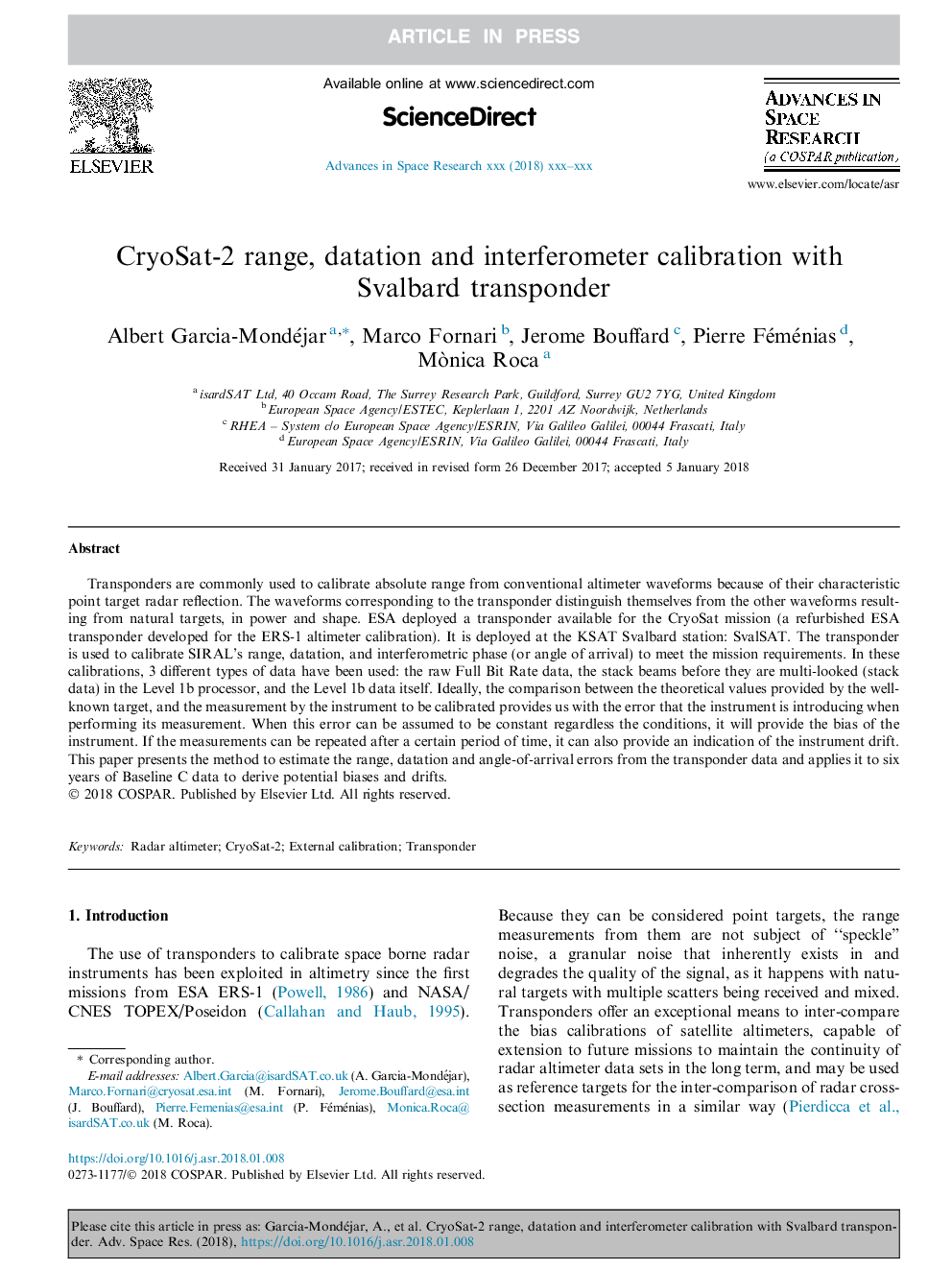| Article ID | Journal | Published Year | Pages | File Type |
|---|---|---|---|---|
| 8131628 | Advances in Space Research | 2018 | 21 Pages |
Abstract
Transponders are commonly used to calibrate absolute range from conventional altimeter waveforms because of their characteristic point target radar reflection. The waveforms corresponding to the transponder distinguish themselves from the other waveforms resulting from natural targets, in power and shape. ESA deployed a transponder available for the CryoSat mission (a refurbished ESA transponder developed for the ERS-1 altimeter calibration). It is deployed at the KSAT Svalbard station: SvalSAT. The transponder is used to calibrate SIRAL's range, datation, and interferometric phase (or angle of arrival) to meet the mission requirements. In these calibrations, 3 different types of data have been used: the raw Full Bit Rate data, the stack beams before they are multi-looked (stack data) in the Level 1b processor, and the Level 1b data itself. Ideally, the comparison between the theoretical values provided by the well-known target, and the measurement by the instrument to be calibrated provides us with the error that the instrument is introducing when performing its measurement. When this error can be assumed to be constant regardless the conditions, it will provide the bias of the instrument. If the measurements can be repeated after a certain period of time, it can also provide an indication of the instrument drift. This paper presents the method to estimate the range, datation and angle-of-arrival errors from the transponder data and applies it to six years of Baseline C data to derive potential biases and drifts.
Related Topics
Physical Sciences and Engineering
Earth and Planetary Sciences
Space and Planetary Science
Authors
Albert Garcia-Mondéjar, Marco Fornari, Jerome Bouffard, Pierre Féménias, Mònica Roca,
